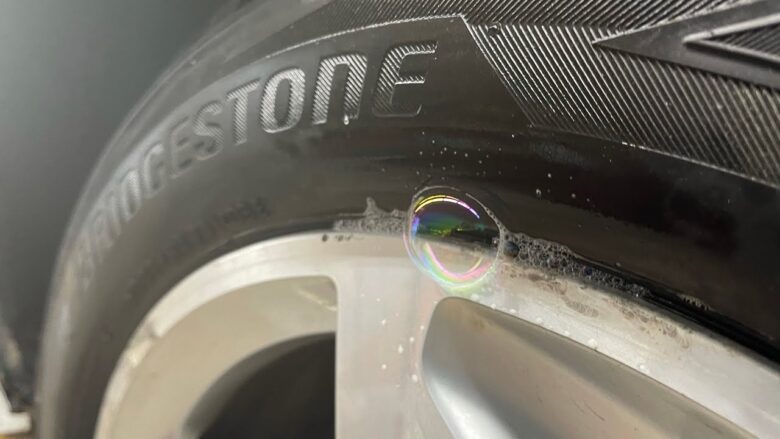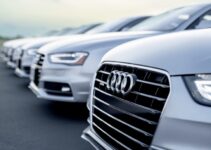Purchasing used tires can be an exercise in thriftiness and environmental consciousness, but it’s also a venture that demands caution and a sharp eye. Whether you’re looking to extend the life of a less frequently used vehicle, or you’re outfitting a daily driver without breaking the bank, knowing how to inspect used tires for safety and quality is crucial. This guide will walk you through the detailed process of assessing used tires so that you drive away with a bargain, not a burden.
When embarking on your tire search, the initial step is to choose where to buy. While online listings might beckon with unbeatable prices, visiting reputable used tire shops ensures you can conduct a thorough inspection before making a purchase. These shops generally have standards for the tires they sell, offering a baseline of quality assurance that can be lacking in private sales.
Date Codes: Tire’s Personal Time Capsule

The age of a tire is a significant determinant of its safety. A tire ages not just from use, but also from exposure to environmental elements. Even a tire that looks new can be too old to be safe. To determine the age of a tire, locate the DOT code on its sidewall, which ends in a four-digit number. The first two digits indicate the week and the last two the year of manufacture. As a rule of thumb, avoid tires more than six years old, as the risk of rubber degradation increases significantly beyond this age.
Tread Carefully: Assessing Tread Depth
Tread depth is a direct indicator of how much life is left in a tire. It also affects how safely a tire can perform, particularly in adverse weather conditions. To check tread depth without a gauge, use the penny test. Insert a penny into the tread groove with Lincoln’s head facing down. If you can see the top of Lincoln’s head, the tread depth is less than 2/32 of an inch, and the tire is not roadworthy. For a safer margin, look for tires with at least 4/32 of an inch.
Reading the Signs: Wear and Tear
Next, examine the tire for signs of uneven wear. Uneven wear can indicate issues like alignment problems in the vehicle that used the tires previously, which can then transfer those problems to your vehicle. Check for any patches or repair marks, which can compromise tire integrity. While minor repairs aren’t necessarily a deal-breaker, they should be scrutinized for quality and durability.
The Integrity of the Sidewall

Source: google.com
The sidewall of a tire is essential for maintaining its structure. Inspect the sidewall closely for any cracks, cuts, or bulges. These can be signs of potential failure points, especially under high-speed conditions or with heavy loads. Sidewall damage is often irreparable and buying a tire with such flaws is a risk not worth taking.
Feeling the Pressure: Internal Damage
Internal damage in a tire can be harder to spot but is crucial for safety. Look for any signs of bulging or anomalies in the tire’s shape, which might suggest internal damage like broken belts or separation issues within the tire itself. This type of damage can seriously impair a tire’s performance and might even lead to sudden catastrophic failure.
The Match Game: Consistency is Key
When selecting more than one tire, it’s important to ensure they match. Mismatched tires can lead to handling issues and uneven wear. Ideally, all tires on a vehicle should be of the same type, size, tread pattern, and wear level. This is especially critical for all-wheel-drive and four-wheel-drive vehicles, where mismatched tires can put undue stress on the drivetrain.
Final Thoughts: Safety Over Savings
While the allure of cost savings is significant, never compromise on safety. Used tires can represent a good deal, but only if they pass a thorough and informed inspection. Always prioritize tire quality over the lowest price. Ensuring the tires you choose are safe not only protects your wallet in the long run but also safeguards the lives of all who travel with you.
Look Out for Leaks

Even if a tire passes all visual inspections, it’s still crucial to check for air leaks. This can be done at a professional tire service center, where they can submerge the tire in a water tank or use a soap solution to check for air bubbles that indicate punctures or leaks not visible to the naked eye. This step is particularly important for ensuring the tire’s integrity and viability on the road.
Know the History
Getting to know the history of the tire can provide additional insights into its condition and suitability for your needs. Ask the seller about the tire’s previous usage, including the type of vehicle it was on and the driving conditions it typically encountered. Tires used in harsh conditions or subjected to overloading and high speeds may have hidden damage even if they appear in good condition.
Consider Professional Advice
If you’re new to buying used tires or if you have any doubts about a tire’s condition, don’t hesitate to seek professional advice. A trusted mechanic or tire expert can provide valuable insights and help you avoid potential safety hazards. They can also offer tips on what to look for and may even accompany you to inspect the tires.
Environmental Impact

Source: bankrate.com
Choosing used tires is not only a budget-friendly option but also an environmentally friendly one. By opting for used tires, you contribute to reducing waste and the demand for new resources used in tire production. However, ensure that your environmental efforts do not compromise safety. Always choose tires that meet safety standards to ensure that your green choices are also safe choices.
Stay Updated on Tire Safety Standards
Safety standards for tires can change as new technologies and regulations emerge. Stay informed about the latest in tire safety standards and recall notices. This knowledge can help you make safer choices and avoid buying tires that have been recalled due to safety issues.
Long-Term Care
Once you’ve chosen and installed used tires, it’s important to maintain them properly to maximize their lifespan and safety. Regularly check the tire pressure, rotate the tires according to the manufacturer’s recommendations, and inspect them periodically for any new signs of wear or damage. Proper maintenance not only extends the life of the tires but also enhances your vehicle’s overall performance and safety.




